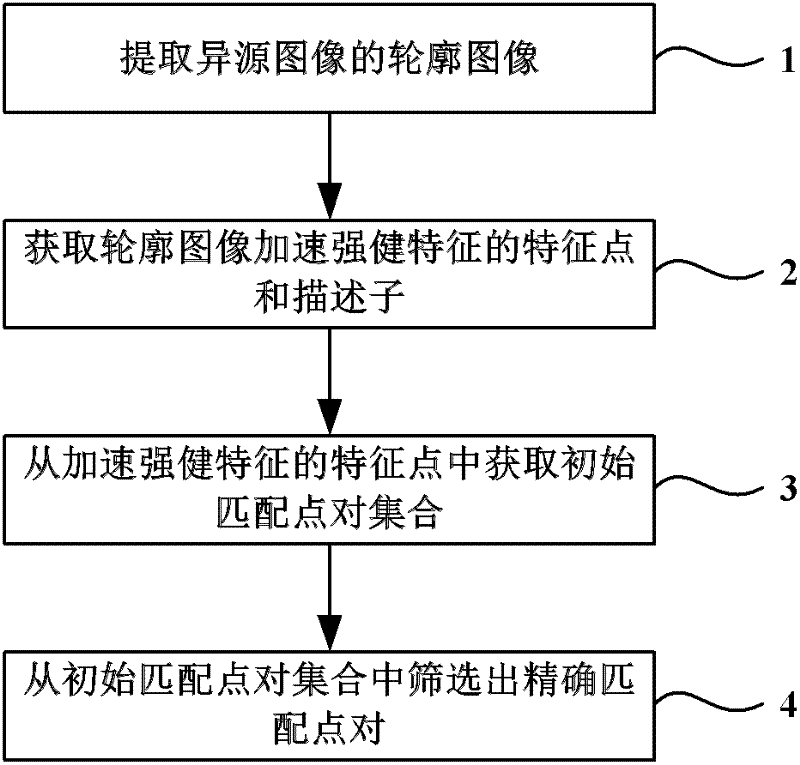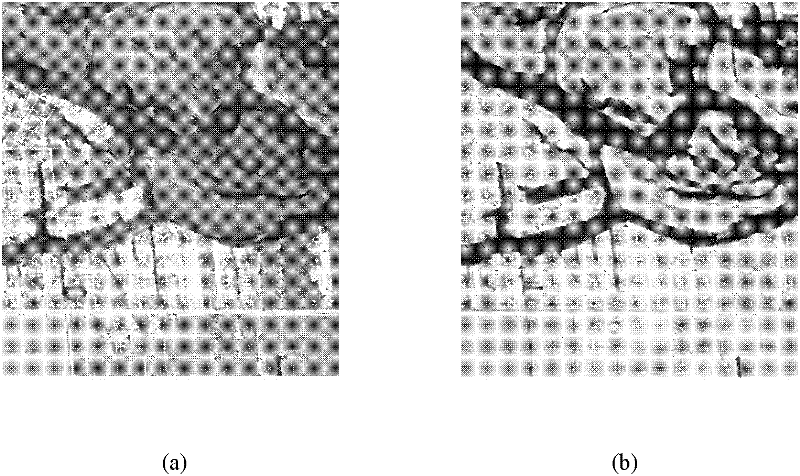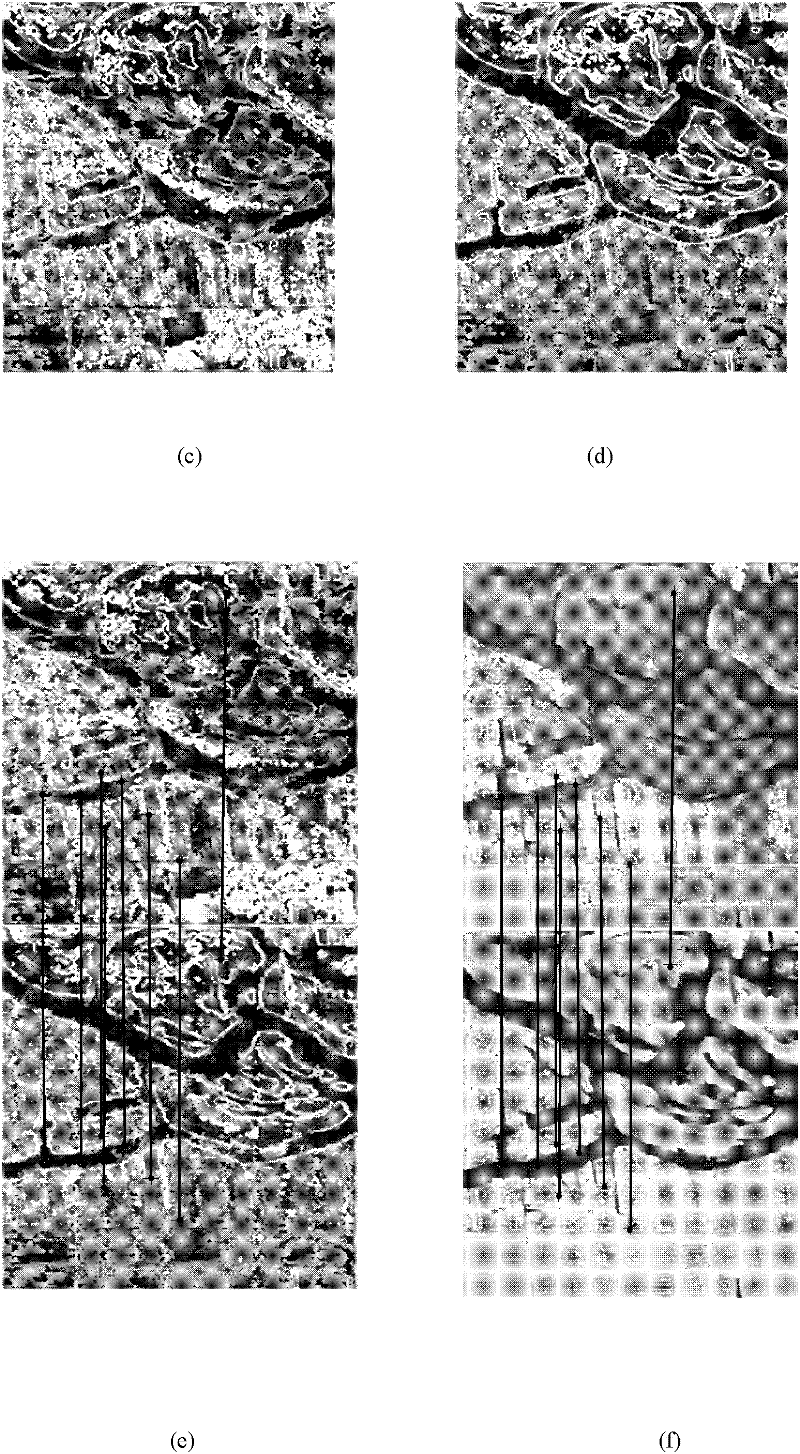Method for detecting consistency of different-source images
A heterogeneous image and feature detection technology, which is applied in image analysis, image data processing, instruments, etc., can solve the problem that there is no consistent feature detection method for heterogeneous images, and achieve the effect of high accuracy and speed
- Summary
- Abstract
- Description
- Claims
- Application Information
AI Technical Summary
Problems solved by technology
Method used
Image
Examples
Embodiment 1
[0057] In the present invention, heterogeneous images refer to two images to be matched. figure 1 It is a flowchart of the consistent feature detection method for heterogeneous images. figure 1 Among them, the consistent feature detection method of heterogeneous images provided by the present invention includes:
[0058] Step 1: Extract the contour image of the heterogeneous image using the 2D cellular automaton model based on the morphological gradient method.
[0059] When the heterogeneous image is a binary image, each pixel of the image is regarded as a cell, the state of the cell corresponds to the gray value of the pixel, and the neighborhood structure of the cell is von Neumann type, that is : It is composed of a central cell (the cell to be evolved) and 4 adjacent cells located in the upper, lower, left, and right directions, including 5 cells in total. In order to realize the task of contour extraction, the information related to the contour is detected from the ima...
Embodiment 2
[0128] figure 2 It is a schematic diagram of the experimental results of using the method provided by the invention to perform consistent feature detection on multi-spectral images in remote sensing images. Two remote sensing images with different spectra are processed by using the consistent feature detection method of heterogeneous images. The input images are as follows: figure 2 (a) and figure 2 As shown in (b), the size of the image is 256×256; first, the two-dimensional cellular automaton model based on the morphological gradient method is used to extract the contour of the input image, and the result is as follows figure 2 (c) and figure 2 (d) shown; and then respectively from figure 2 (c) and figure 2 (d) Obtain SURF feature points and descriptors; then use the matching strategy of Euclidean distance and nearest neighbor distance ratio to obtain initial matching point pairs from SURF feature points; finally use RANSAC algorithm to screen out exact matching p...
Embodiment 3
[0130] image 3 It is a schematic diagram of the experimental results of using the method provided by the invention to perform consistent feature detection on CT images and MRI images in medical images. CT images and MRI images are processed by the consistent feature detection method of heterogeneous images, and the input images are as follows: image 3 (a) and image 3 As shown in (b), the size of the image is 256×256; first, the two-dimensional cellular automaton model based on the morphological gradient method is used to extract the contour of the input image, and the result is as follows image 3 (c) and image 3 (d) shown; and then respectively from image 3 (c) and image 3 (d) Obtain SURF feature points and descriptors; then use the matching strategy of Euclidean distance and nearest neighbor distance ratio to obtain initial matching point pairs from SURF feature points; finally use RANSAC algorithm to screen out exact matching points from the initial matching point...
PUM
 Login to View More
Login to View More Abstract
Description
Claims
Application Information
 Login to View More
Login to View More - R&D
- Intellectual Property
- Life Sciences
- Materials
- Tech Scout
- Unparalleled Data Quality
- Higher Quality Content
- 60% Fewer Hallucinations
Browse by: Latest US Patents, China's latest patents, Technical Efficacy Thesaurus, Application Domain, Technology Topic, Popular Technical Reports.
© 2025 PatSnap. All rights reserved.Legal|Privacy policy|Modern Slavery Act Transparency Statement|Sitemap|About US| Contact US: help@patsnap.com



